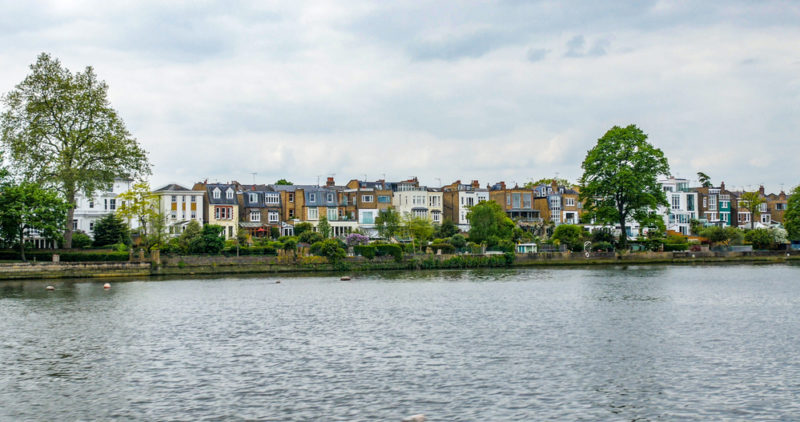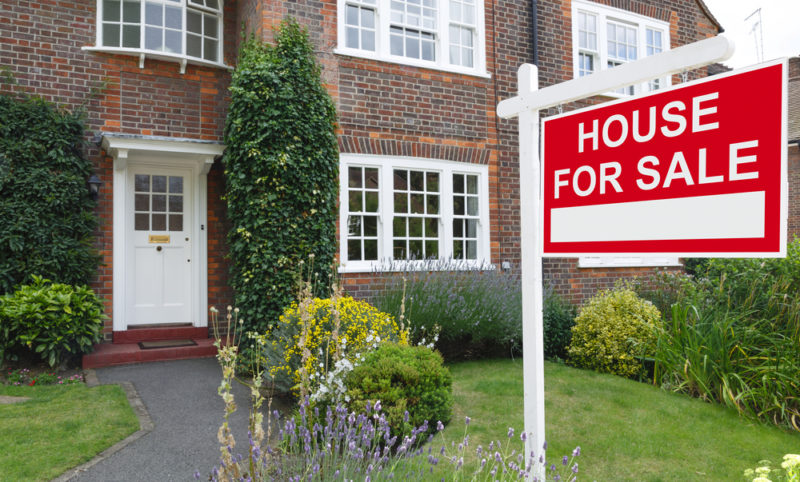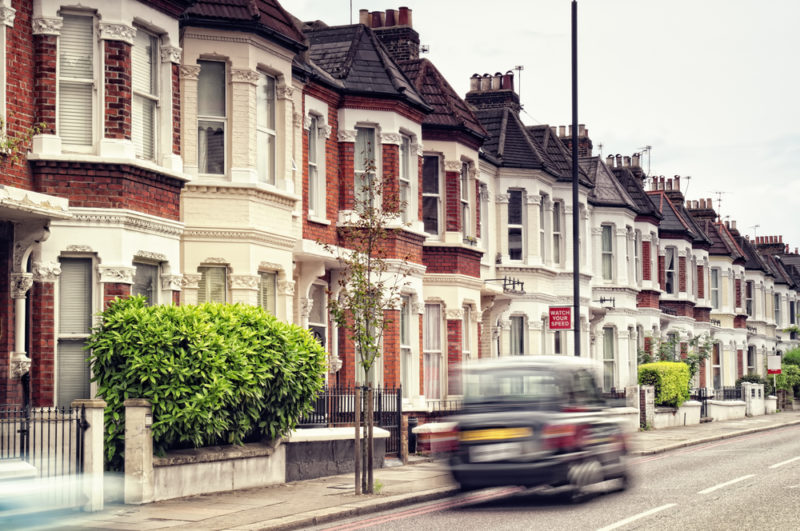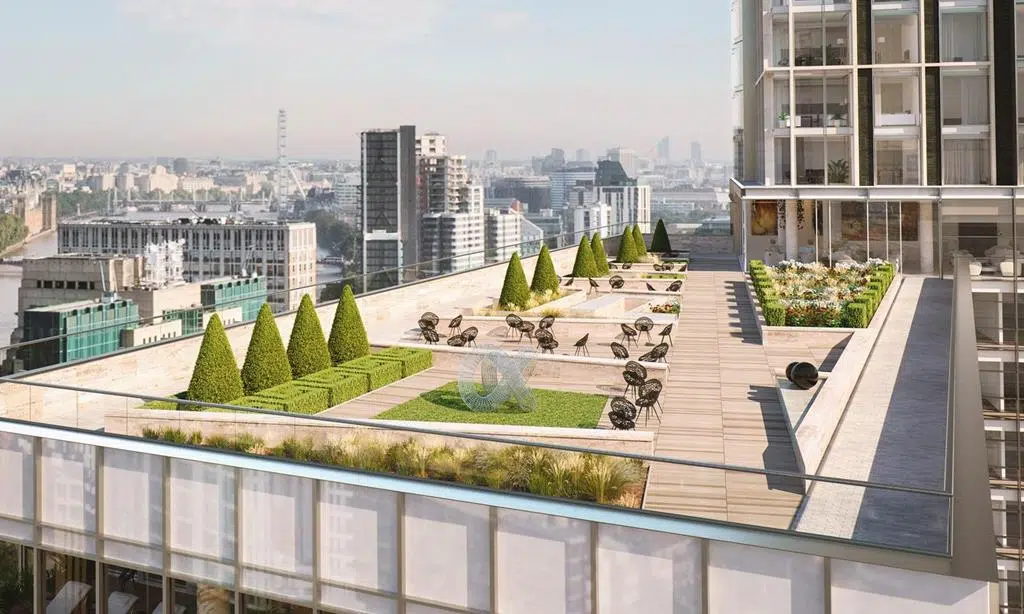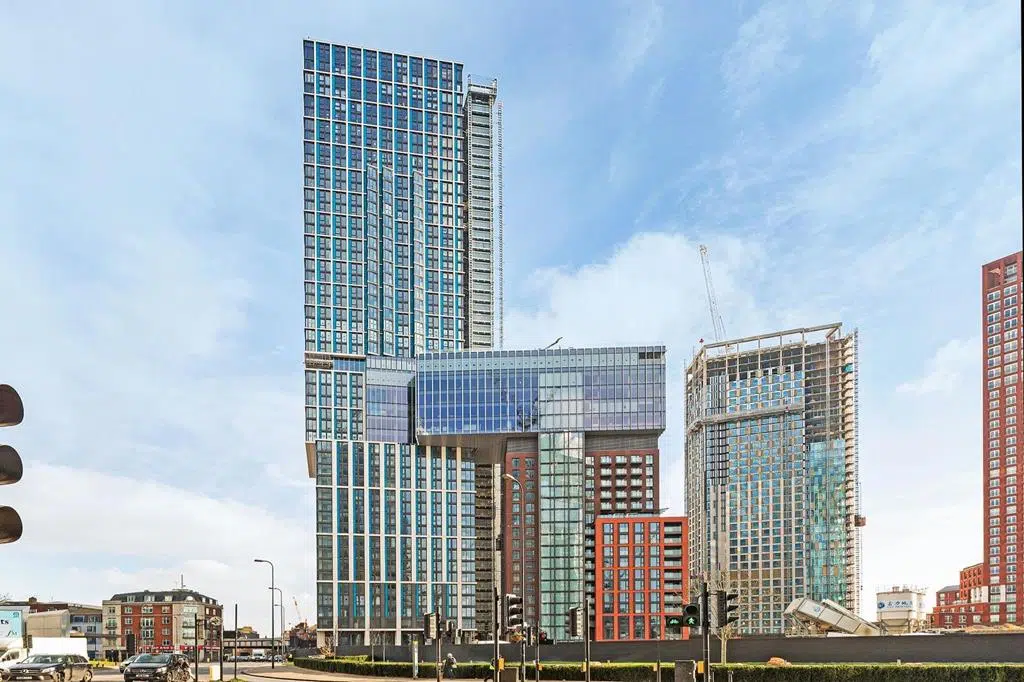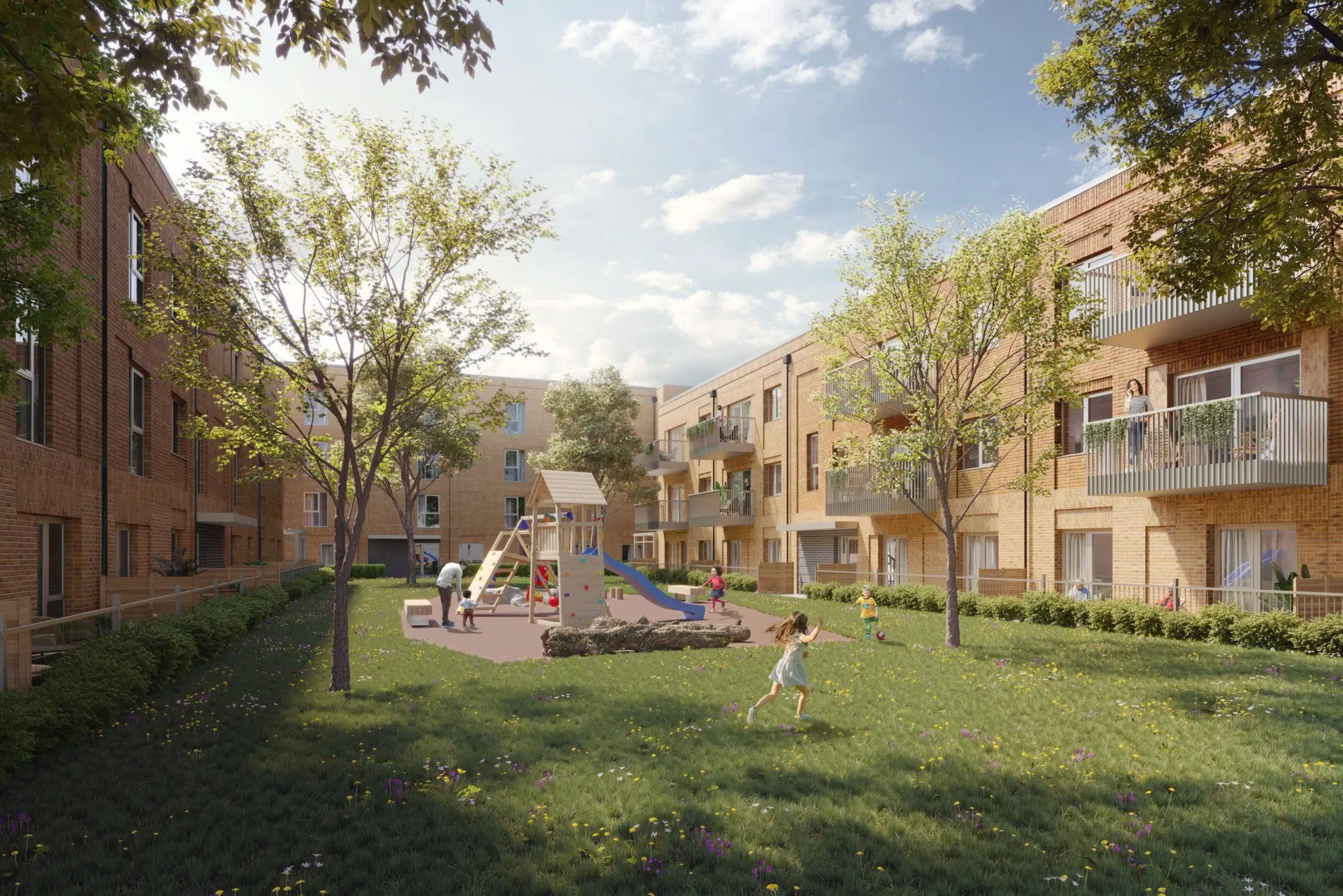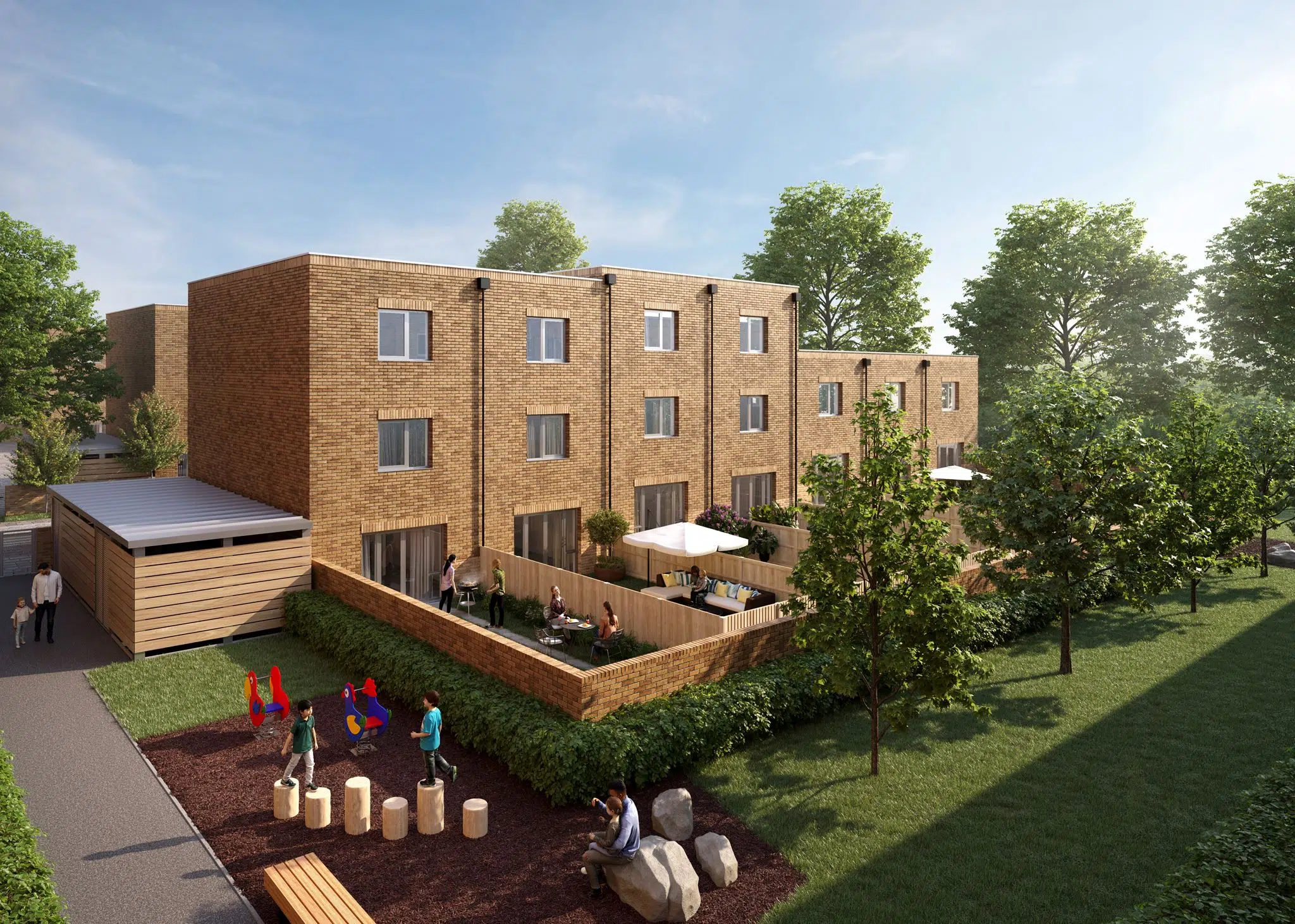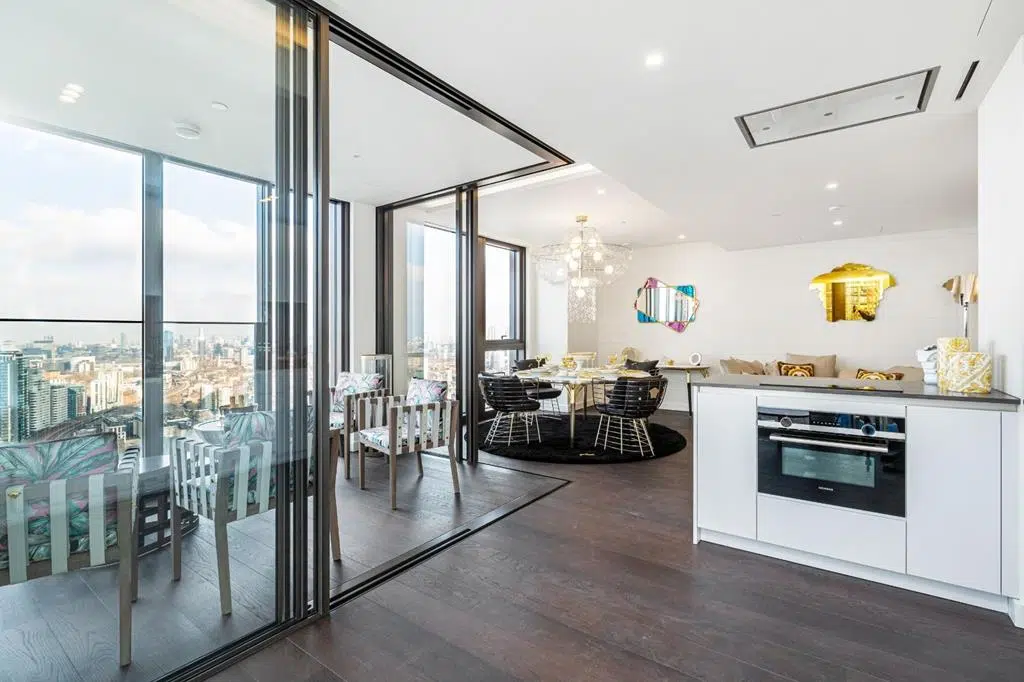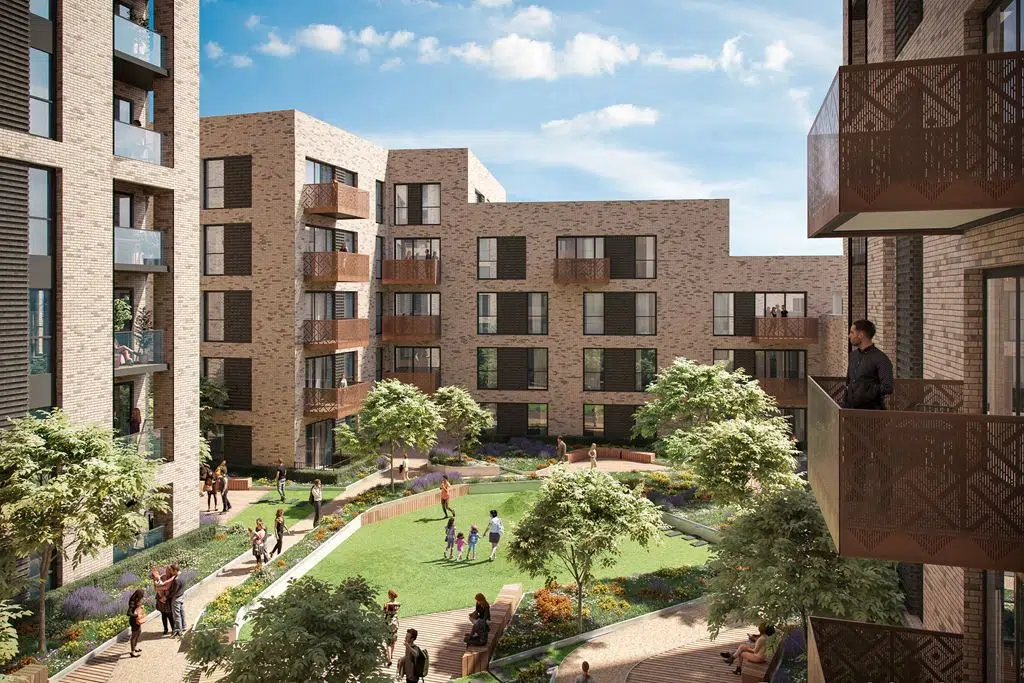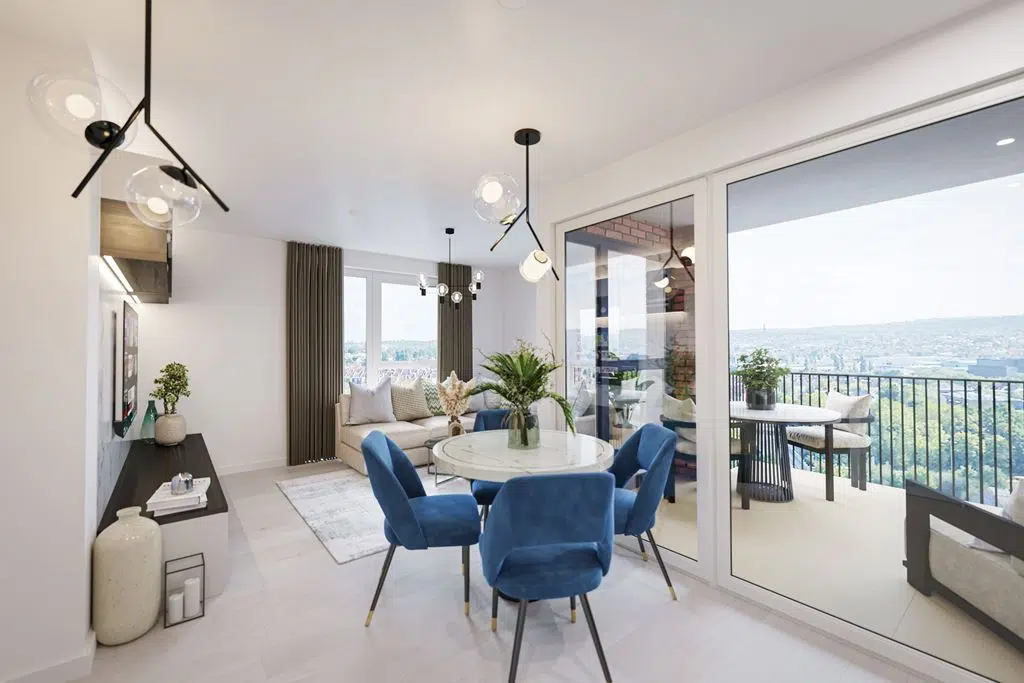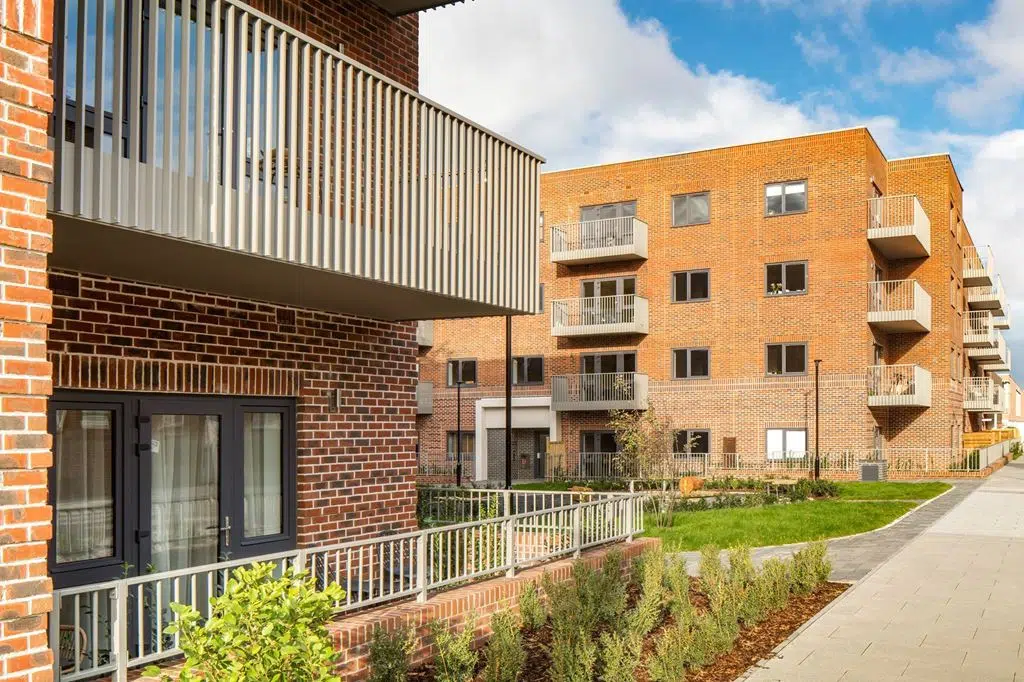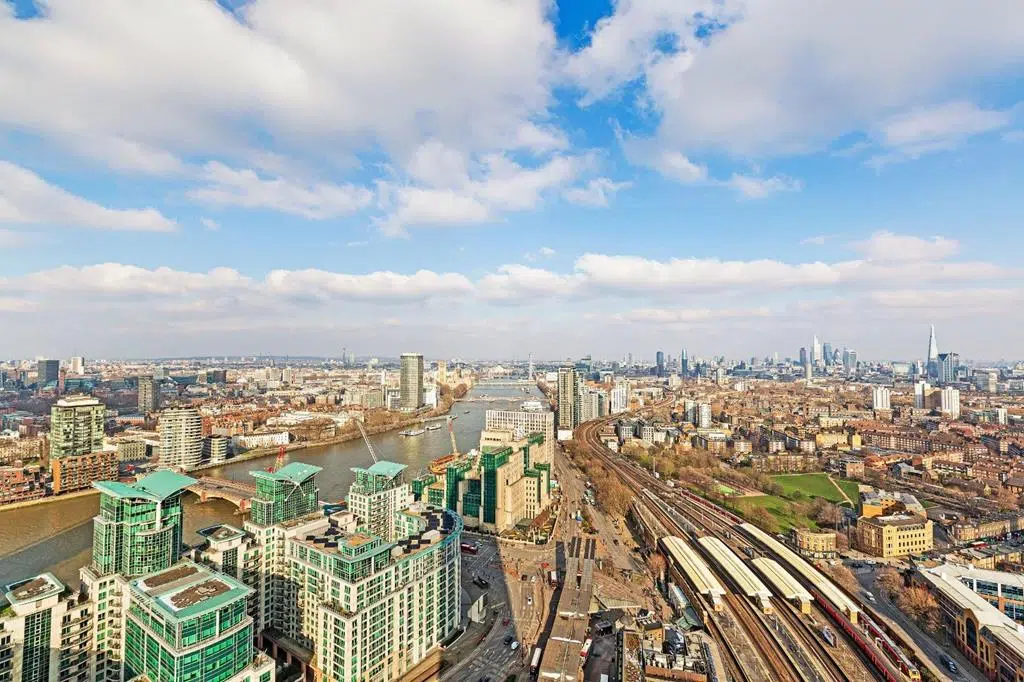We have all heard the age-old saying of location, location, location, but what exactly is considered a good location in real estate? Whether you are a real estate investor or a family looking to set up a home, location does matter. Please don’t underestimate the importance of it.
To help you in your real estate search, general rules apply when choosing a property or apartment complex with an ideal location. The only exception to the rule is rural, mountainous, or countryside property, in which you must be flexible. But let’s look at the factors determining if that ideal house has location potential for an excellent real estate investment.
What is Considered a Good Location in Real Estate
1: Low Crime Rates and Feeling Safe
An attractive investment opportunity always starts with low crime rates, and this increases demand. This aspect of house hunting cannot be overstated enough, as it directly affects property values and security for residents. Individuals and families often prioritize safety and peace of mind when selecting where to live, and the crime percentage contributes significantly to these factors. This is definitely a no-brainer for long-term real estate success.
Personal Safety: Low crime directly translates to safer environments for residents. Buyers want to ensure their families live without constant fear of becoming victims, and lower crime means a reduced likelihood of burglary, assault, and other criminal activities, contributing to personal safety and a comfortable life.
Property Values and Resale Potential: Low-crime areas generally experience more stability, appreciating house values, and higher demand, whereas high-crime areas lead to declines as potential buyers are deterred, and existing residents may look to relocate. When it comes time to sell the property, low crime and an attractive house are significant selling points, because potential buyers are attracted to a property in safe neighbourhoods, leading to quicker sales and potentially higher resale values.
Insurance Costs: Local crime rates influence property insurance rates, and in areas with lower crime, insurance premiums are more affordable, with cost savings for property owners, making it practical and financially beneficial to invest in safe areas.
Community and Businesses: Low crime encourages positive community atmospheres because people engage with neighbours, participate in community events, and invest in neighbourhoods when they feel safe.
They feel comfortable walking their neighbourhoods, utilizing public spaces, and letting their children play outside. Companies are also more likely to establish themselves in locations with reputations for safety, as this impacts employee satisfaction, productivity, and overall business success.
2: Public Transportation and Getting About
Excellent transportation when buying a house extends beyond immediate convenience for daily commutes. Efficient and reliable public transport stations significantly impact various aspects of your lifestyle, financial considerations, and overall financial investment.
Convenience and Accessibility: Transportation options like buses, bike-sharing stations, trains, or subway stations provide convenient access to key destinations such as workplaces, schools, shopping centres, and recreational parks. This accessibility saves time and reduces the stress associated with daily commuting.
Cost Savings and Environmental Impact: Owning and maintaining a car entails financial burdens, whereas public transport allows homeowners to reduce their dependence on personal vehicles, saving money on fuel, maintenance, parking fees, and insurance.
This results in substantial long-term cost savings, and public transport is also more environmentally friendly than individual car use. By choosing public transit options, homeowners contribute to reducing traffic congestion and lowering carbon emissions, thereby supporting more sustainable and eco-friendly lifestyles.
Property Value and Work-Life Balance: Homes in areas with good public transport have higher home values. Public transit hubs or well-connected transportation networks are attractive features for potential buyers because living near reliable public transport leads to a healthier work-life balance.
Commuting stress is minimized, allowing individuals to use their travel time more productively or enjoy leisure activities, as well as overall well-being and job satisfaction. Public transport also expands homeowners’ pool of job opportunities. With the ability to access more expansive geographic areas, individuals consider job opportunities that may not be feasible without reliable and efficient transportation options.
Reduced Traffic and Community: Homes near transportation hubs contribute to reducing overall traffic congestion to benefit the community and make it easier to navigate the roads when necessary. Public transport also fosters community integration by making connecting with neighbours, local businesses, and community events easier. This sense of connection and community engagement enhances overall living experiences.
3: How Does the Real Estate Market Perform?
Real estate markets play pivotal roles in decision-making when choosing a location to buy your dream house. Market dynamics influence house prices, housing demand, future investment potential, and homeownership satisfaction.
Property Value and Market Stability: Robust housing markets often correlate with property appreciation. Choosing a location with steady or increasing home values is advantageous for homeowners, as it may lead to higher returns on investment when it comes time to sell because demand increases.
The stability of housing markets is also essential for homeowners seeking secure and predictable investments. Markets that experience less volatility are generally more attractive for long-term property ownership, providing financial security and confidence in the value of your home.
Affordability, Market Trends and Resale Potential: Real estate markets vary in affordability, and understanding market trends is vital for prospective buyers. Studying factors like median home prices, inventory levels, and housing demand helps home buyers assess whether particular markets fit their budgets and preferences.
The resale potential and demand of homes are closely tied to this factor. In strong markets, homes sell more quickly and at competitive prices. This is advantageous for homeowners needing to relocate or sell their property.
Investment and Financing Opportunities: Housing markets present unique investment opportunities, and areas experiencing growth, development, or revitalization may offer promising investment potential. Understanding market trends and watching upcoming developments helps buyers identify locations with long-term appreciation prospects.
Remember that market conditions impact financing options and interest rates. Favourable market conditions lead to more competitive mortgage rates, potentially saving homeowners significant amounts over the life of their loan. Be aware of market dynamics to help you make strategic financing decisions.
Job Market and Economic Conditions: The job market and overall economic conditions significantly impact housing markets. Strong job growth and diverse, thriving economies often contribute to healthy property markets attracting homebuyers and investors. Housing markets are intertwined with overall communities, and safety, education, healthcare, and cultural amenities influence an area’s desirability and housing supply. The real estate market is critical to consider when buying a house.
4: Residential Developments
Residential development potential plays a crucial role in extraordinary investments and demand for housing. The area’s level of development significantly impacts overall living experiences and the long-term appeal of dream neighbourhoods.
Infrastructure and Urban Planning: Residential developments are integral to an area’s infrastructure and urban planning. Thoughtfully planned communities with well-maintained roads, sidewalks, and utilities significantly differ in convenience and functionality.
Community Atmosphere: The design and layout of residential areas also influence community atmospheres, and extra developments like green spaces, pedestrian-friendly areas, and mixed housing types encourage cohesive neighbourhood environments. These elements foster community and social interaction among residents.
Property Values: Residential developments impact house values and make or break an ideal neighbourhood. Well-maintained, aesthetically pleasing neighbourhoods with attractive landscaping and modern infrastructure will likely attract more buyers, leading to stable or appreciating property values over time.
Safety and Schools: Gated communities and well-planned residential areas often enhance security measures, like surveillance systems, controlled access points, and community patrols. This creates a more excellent sense of safety and security for homeowners. The proximity and quality of schools within or near residential developments are also crucial for families, and good educational institutions significantly influence area desirability.
Mixed-Use Developments: Integrated residential areas that incorporate commercial, retail, and office spaces provide convenient and vibrant lifestyles for residents. This concept, known as mixed-use development or apartment suites, allows for shopping, dining, and entertainment options within walking distance, contributing to more dynamic living experiences.
Environmental Considerations: Sustainable and eco-friendly residential areas are becoming increasingly important. Features like energy-efficient buildings, green spaces, and environmentally conscious design create more sustainable and healthy living environments.
Transportation Connectivity: The location of residential areas concerning transportation networks is crucial. Transportation, major roads, and highways enhance connectivity, making the area more convenient to commute and travel.
Future Development Plans: Understanding development plans for an area is essential. New developments and infrastructure projects impact community growth trajectories. Researching local zoning regulations and development plans provides good insights into future landscapes.
5: Access to Amenities and Facilities
Amenities and facilities are crucial considerations in your house search, as they significantly impact homeowners’ convenience and overall satisfaction. Basic amenities contribute to functionality and desirability, making it essential for prospective buyers to assess the availability in their decision-making process.
Quality of Life: The presence of well-designed amenities enhances life for residents. Parks, green spaces, recreational facilities, and community centres provide opportunities for leisure and social interactions, contributing to more fulfilling living experiences.
Recreational Opportunities: Convenience to amenities and recreational facilities such as gyms, swimming pools, sports courts, and walking trails adds recreational dimensions to daily life. These amenities promote healthy lifestyles, allowing residents to engage in physical activities near their homes.
Community Spaces: Amenities that facilitate community engagement, such as clubhouses and communal gathering areas, foster belonging and connection among residents. These spaces serve as venues for social events, meetings, and gatherings, promoting solid and supportive community atmospheres.
Education and Learning Centres: Proximity to educational facilities, libraries, and public schools is essential for families and individuals seeking continuous personal and intellectual development. Necessary amenities contribute to well-rounded and culturally enriched communities.
Security and Safety Features: Some residential areas offer amenities that enhance security, like gated access, surveillance systems, and well-lit common areas. These features create safer living environments and appeal to homeowners who prioritize security.
Shopping and Dining Options: Convenience and supply are essential when choosing a neighbourhood with affordable housing costs. Nearby shopping centres, grocery outlets, dry cleaners, and restaurants save residents time and make daily life more convenient. These amenities also contribute to communities and make the area a hot location.
Healthcare Facilities: Proximity to healthcare clinics and hospitals encourages residents’ well-being. Having medical services within the vicinity is significant, especially for families and individuals with health considerations.
Transportation Accessibility: Amenities like transportation, major roads, and highways contribute to location accessibility. Accessible transportation options make commuting to work, school, and other essential destinations more convenient.
Environmental Considerations: Green and sustainable amenities, like parks, community gardens, and eco-friendly features, create more environmentally conscious living environments. These considerations align with the growing interest in sustainable and eco-friendly lifestyles.
Resale Value: Attractive facilities impact real estate prices. Homebuyers are often willing to pay more for homes in neighbourhoods that offer desirable amenities, making it a hot location for long-term property appreciation.
They not only enhance residents’ daily lives but also contribute to overall attractiveness and long-term value. Prospective buyers should carefully assess facilities available in potential neighbourhoods to ensure that they align with their lifestyle preferences, encouraging satisfying homeownership experiences.
Why is the Impact of Location in Real Estate Important?
Property location is critical for several reasons, and it plays a pivotal role in determining property value and desirability. This is about more than real estate market trends but a core factor over time. Accessibility to essential services, amenities, and transportation hubs is fundamental, and proximity to schools, hospitals, shopping centres, and major roads greatly influences convenience for residents.
The neighbourhood in which a property is located directly impacts safety. Buyers are often concerned about crime, street cleanliness, and general ambience. Safe and well-maintained areas like a cul-de-sac location make for a fancier house. Proximity to employment centres and job opportunities is significant, influencing where to live. Decent locations with thriving job markets and hubs appeal to professionals and job seekers.
A location’s potential for future development and quality of infrastructure are essential considerations. Areas with planned developments, improved transportation networks, and infrastructure upgrades often experience increased house prices over time. Cultural and recreational offerings in a property location contribute to the appeal, whether it’s theatres, museums, sports facilities, or other entertainment options.
The impact of location significantly influences resale house prices. Homes in desirable locations tend to hold their value better over time. They may experience appreciation, making them more attractive to potential buyers. Housing markets vary widely based on location. Understanding local market dynamics, including trends, supply, and demand, helps to make informed decisions about buying or selling property.
Different locations cater to diverse lifestyle preferences. Whether someone prefers an urban environment with bustling city life or quiet suburban neighbourhoods, the location dictates the type of lifestyle one can enjoy. Buyers should carefully evaluate locations based on their needs, preferences, and future prospects to make well-informed real estate investments.
What other Factors Influence Real Estate?
Size, Layout and Condition: The size of the home, including the number of bedrooms and bathrooms, as well as layout, affects value. Larger homes or those with efficient and functional layouts often command higher prices. Well-maintained homes with updated features and modern appliances typically have higher values. On the other hand, homes needing repairs or renovations may be valued lower.
Age, Upkeep and Curb Appeal: The age of a home and the extent to which it has been maintained or renovated influence value. Newer homes or those that have been well-maintained and updated are more valuable than older, outdated properties. A home’s first impression, often called curb appeal, impacts value. Well-landscaped yards, well-maintained exteriors, and an aesthetically pleasing appearance contribute positively to a home’s perceived value.
Market Conditions: Overall, housing market conditions, including supply and demand, interest rates, and economic factors, play significant roles. In a seller’s market, prices may be higher due to increased demand. The prices of recently sold homes in the same or similar neighbourhoods, known as comparable sales or comps, are used to assess selling prices. Real estate appraisers and agents often consider recent sales when determining a property’s worth.
Property Taxes and Interest Rates: Expensive property taxes negatively affect a home’s value, as potential buyers may be deterred by the ongoing financial burden. Additionally, lower interest rates often make homeownership more affordable and contribute to increased demand and higher prices.
How do I Know if a Location is Good for Property Investing?
Safety and School Quality: Research online crime mapping tools, local police department websites, or community resources. Check the quality of local schools, even if you don’t have children. High-performing schools are often associated with desirable neighbourhoods.
Amenities and Property Trends: Evaluate the availability of nearby amenities like shopping centres, grocery stores, and healthcare services because convenient services enhance the area’s overall appeal. Examine house values and consider historical trends. Steady or increasing house values indicate well-regarded neighbourhoods.
Neighbourhood and Transportation: Observe the appearance and maintenance of properties. Well-maintained homes, streets, and public spaces indicate community pride and desirable living environments. Evaluate transportation options and infrastructure because significant transit routes, bus routes, and highways enhance accessibility and convenience.
Local Community and Development: Attend local community events or visit community centres to gauge social activities and engagement. Vibrant communities often contribute to positive living experiences. Research any planned developments or infrastructure projects because future improvements impact values and area attractiveness.
Neighbourhood Demographics: Consider demographics because different neighbourhoods cater to various lifestyles, age groups, or cultural preferences. Assess the noise levels and environmental factors because proximity to busy roads, industrial areas, or commercial zones impacts lifestyles.
Real Estate Insights and Walkability: Consult with local real estate agents with area knowledge for valuable information about neighbourhood trends, amenities, and potential challenges. Evaluate the walkability to nearby parks, shops, and public spaces.
Remember that what makes neighbourhoods “good” varies based on individual preferences and needs. Visit at different times of the day, talk to residents, and gather as much information as possible about whether the area aligns with your lifestyle and priorities.
What makes a Bad Location?
High Crime and Poor Schools: Elevated crime, including burglary, theft, or violent crimes, is significant, so crime statistics should be researched to assess safety levels. Low-performing schools or lack of quality educational institutions may not be suitable for families with children or those planning to have them.
Deteriorating Infrastructure: Poorly maintained roads, inadequate public transportation, and outdated infrastructure negatively impact area accessibility and functionality. Likewise, excessive traffic, noise pollution, or proximity to busy highways negatively impact overall location appeal. Lack of nearby parks, grocery stores, and recreational facilities creates a less convenient and attractive living environment.
Unemployment and Economic Decline: High levels of unemployment and signs of economic decline result in reduced home values and limited future growth prospects. Limited community engagement, lack of neighbourhood events, and community pride contribute to less connected living experiences. Lack of planned development or signs of neglect by local authorities may indicate stagnant or declining neighbourhoods, affecting the potential for future property appreciation.
Negative Reviews or Testimonials: Negative reviews from current or former residents may highlight issues with the neighbourhood. Pay attention to feedback about safety, community atmosphere, and overall satisfaction. Excessive property taxes relative to the services and amenities are financial burdens for homeowners.
Remember, perceptions of a “bad” location change over time, and some neighbourhoods may undergo revitalization efforts. Conduct thorough research, visit the area at different times, and consult with real estate professionals to assess whether the area matches your specific needs and preferences.
Use Our Real Estate Agent Services
So, we hope we have helped you in your location-searching process for a comfortable life. With such an involved process, it is understandable that many home buyers take their time choosing the ideal property in desirable home locations.
Our property portfolio for sale in major cities of the UK, has varied demographic characteristics that stand out. Whether looking for beautiful locations or urban living, it is brimming with ideas. Alternatively, call us today to chat with an agent about a good location in real estate, investment decisions, or market trends.
Also About Buying Property
Questions to Ask a Real Estate Agent: There are many fundamental questions to ask when hiring a real estate agent. Whether you buy locally or overseas, real estate transactions are significant lifestyle endeavours and shouldn’t be taken lightly. Not only do you have to navigate real estate markets and find homes for sale, but there is also the selling process, financial transactions, closing costs, commission rate, and more before you even take possession of the property and move in.
How to Invest in Property: Knowing how to invest in property wisely means building wealth and securing your financial future. This long-term investment option generates passive income and capital appreciation for any savvy property investor. But besides the investment opportunities, investors need significant capital, research, and knowledge to make informed decisions and succeed in local and regional industries.

